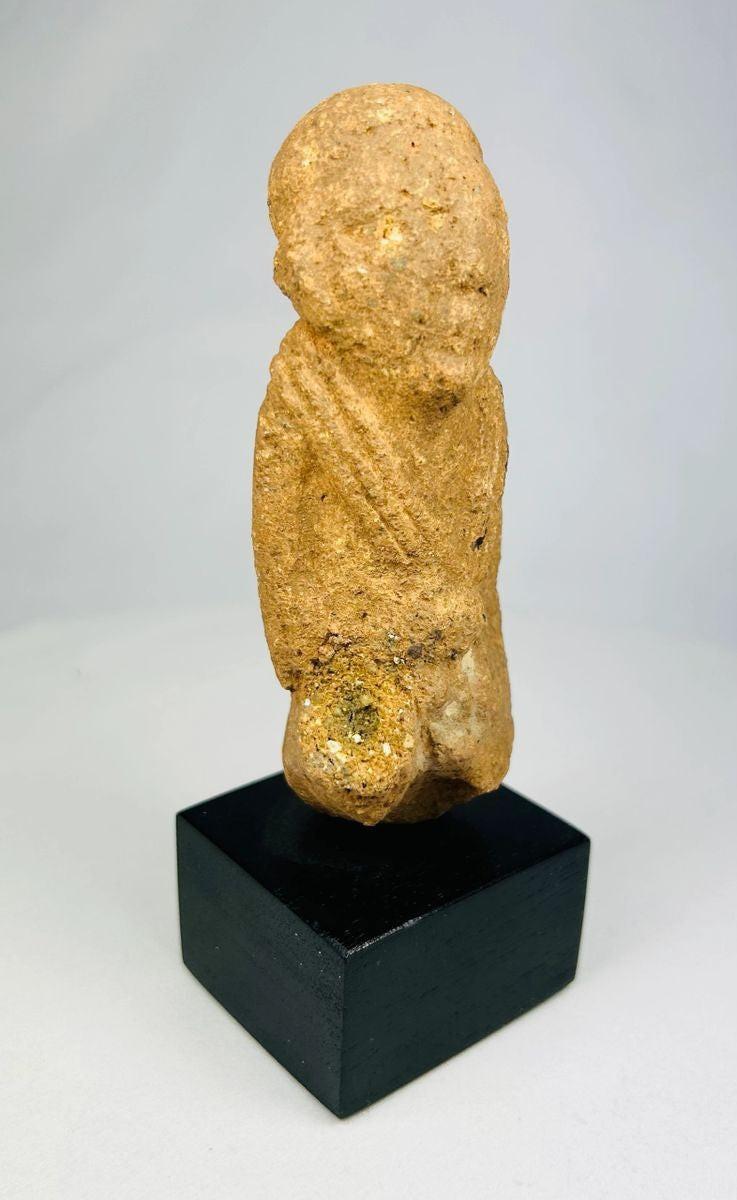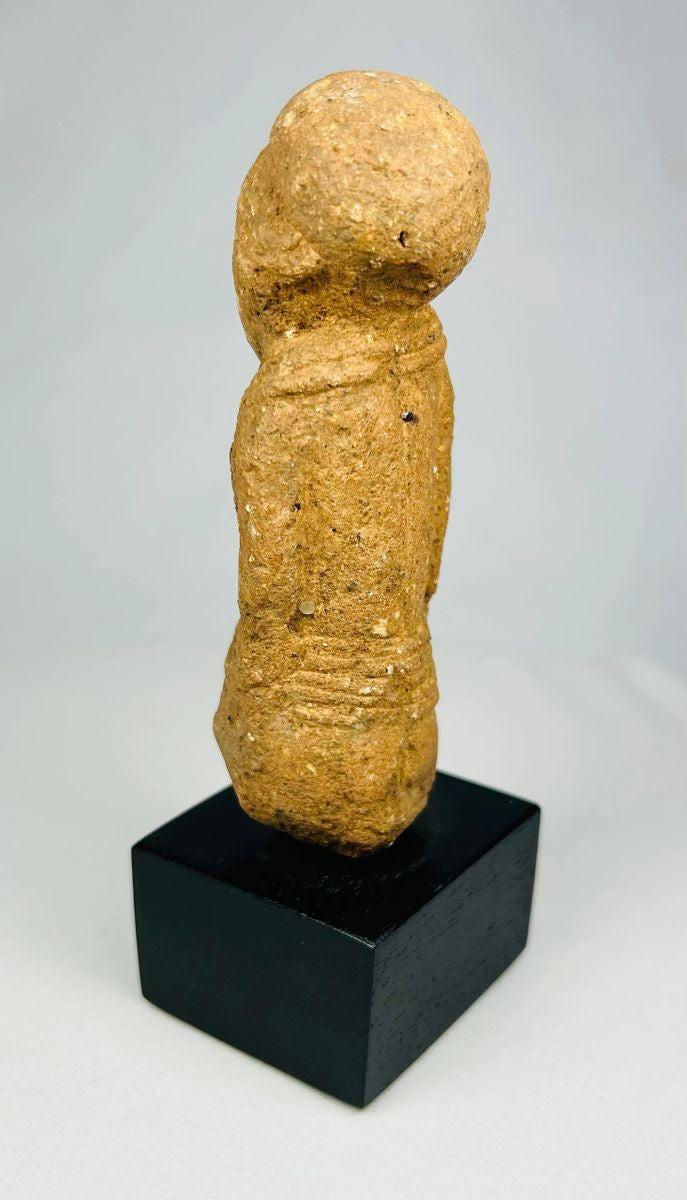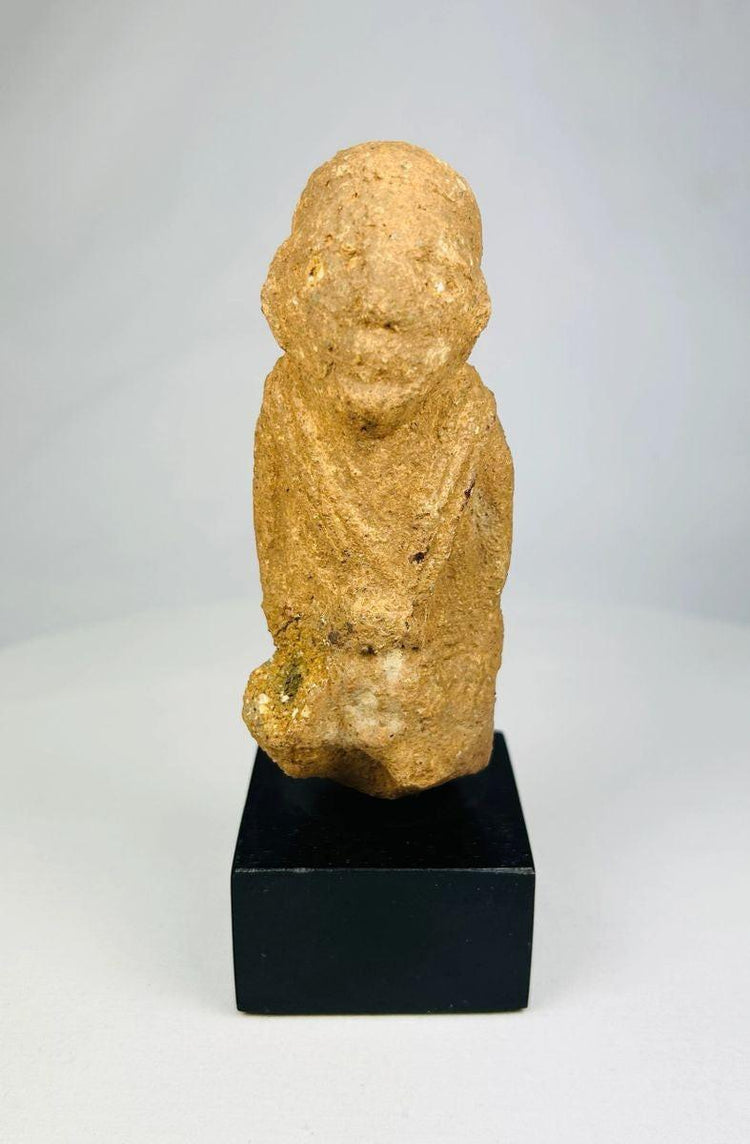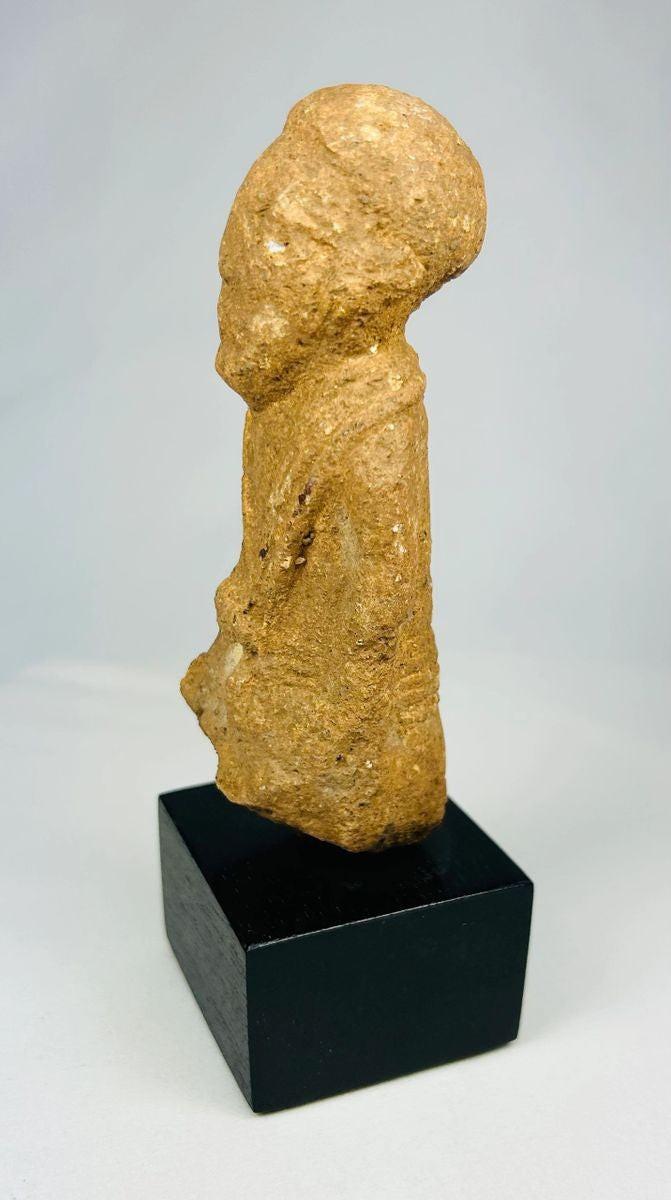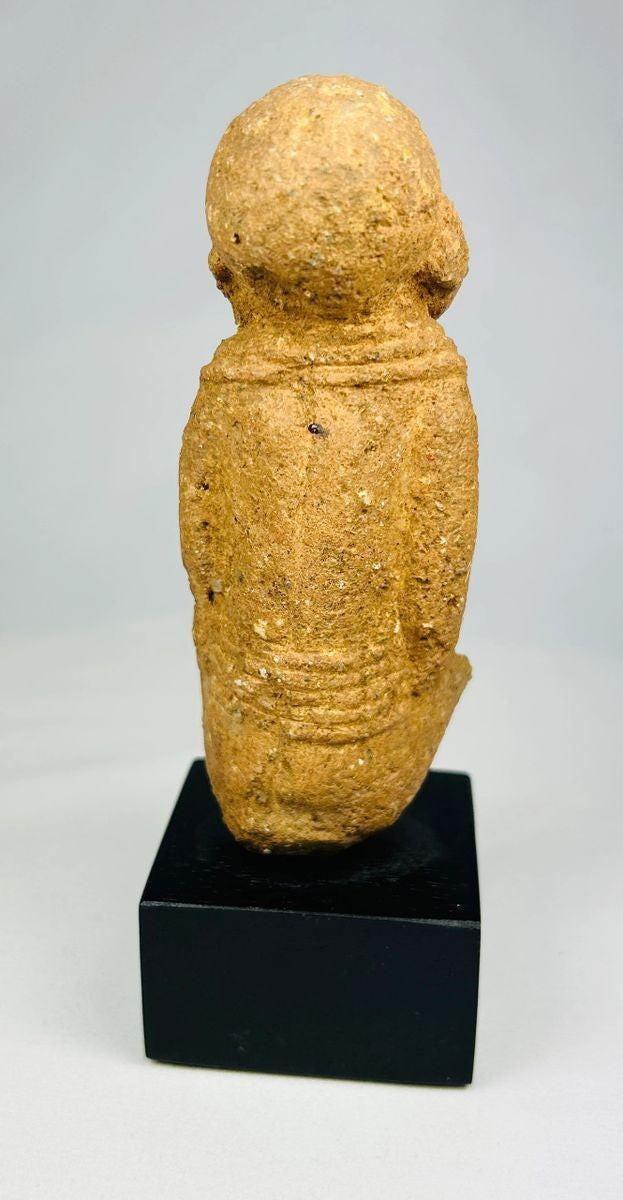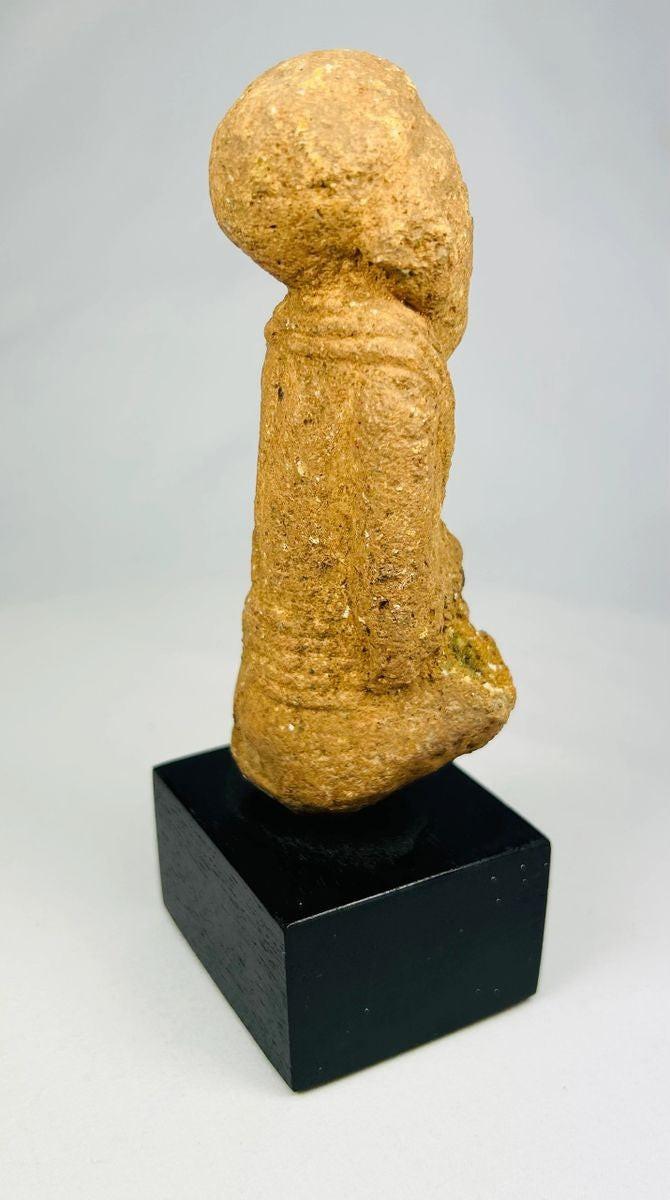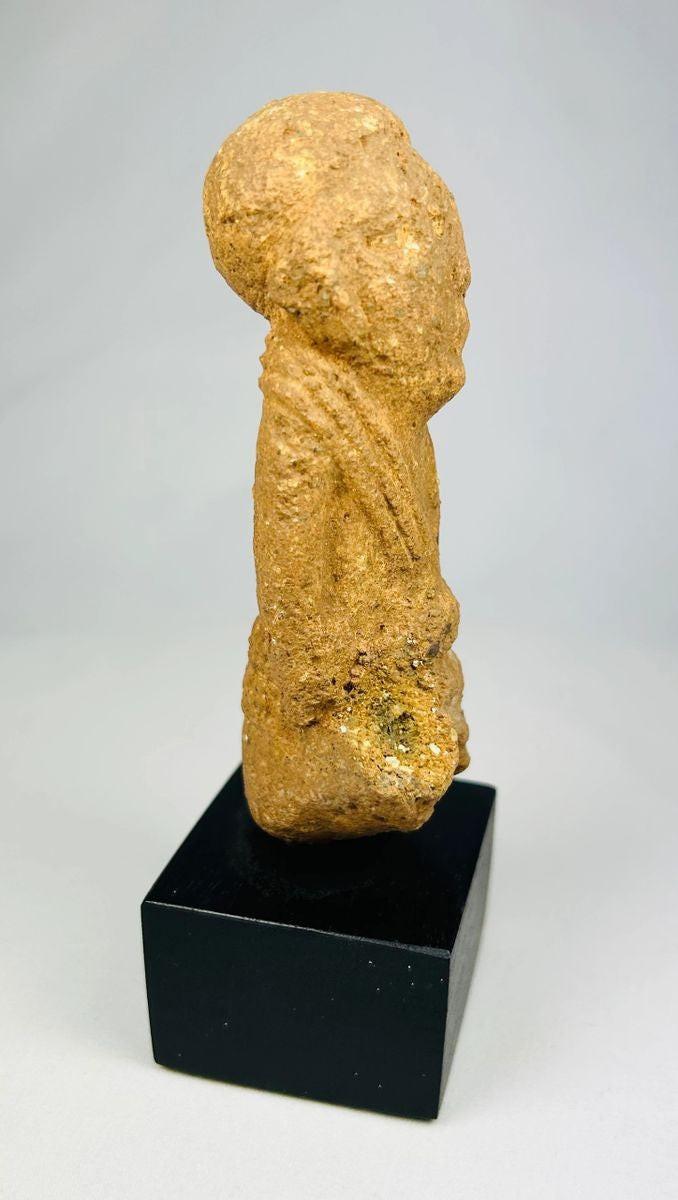Sokoto antiguo | África occidental | Figura de terracota | Circa 500-200 d. C.
Descripción
Más
Menos
Contexto histórico y origen
Región: África Occidental, Civilización Sokoto
Material: Arcilla de terracota rojiza, de origen local.
Periodo: 500–200 a. C.
Descripción
Esta figura de terracota de Sokoto representa las florecientes tradiciones artísticas y espirituales del África Occidental primitiva. La figura, elaborada en terracota rojiza, presenta una cabeza redondeada, rasgos faciales simplificados y una vestimenta similar a una túnica. Su postura y forma escultóricas son características del arte de Sokoto, priorizando la expresión simbólica sobre la naturalista. Las figuras de terracota de este tipo se creaban a menudo como ofrendas votivas, guardianes espirituales o representaciones de personas veneradas, reflejando su papel en la vida ceremonial y religiosa.
Características
- Terracota modelada a mano con arcilla de origen local.
- Cabeza redondeada y rasgos simplificados y estilizados.
- Prenda tipo bata con detalles esculturales.
- Postura distintiva acorde con la tradición Sokoto
- Montado para estabilidad y exhibición.
Importancia cultural
La civilización Sokoto era conocida por sus avanzadas estructuras sociales y su refinada producción artística. Figuras como esta albergaban un profundo significado espiritual, sirviendo como intermediarios en prácticas ceremoniales o como guardianes protectores. Sus formas simbólicas revelan la intersección de la religión, la comunidad y el arte en la cultura temprana de África Occidental. Hoy en día, constituyen valiosos vínculos con una de las primeras civilizaciones de África, ofreciendo una perspectiva tanto de la práctica ritual como del desarrollo estético.
Condición
La superficie muestra erosión natural, pátina y finos gránulos incrustados en la arcilla, lo que atestigua su autenticidad y siglos de enterramiento. Se encuentra en un estado estable, sin restauraciones modernas.
Dimensiones (aproximadas)
Altura: 6 pulgadas
Edad
Más de 2.000 años de antigüedad
Descripción
Contexto histórico y origen
Región: África Occidental, Civilización Sokoto
Material: Arcilla de terracota rojiza, de origen local.
Periodo: 500–200 a. C.
Descripción
Esta figura de terracota de Sokoto representa las florecientes tradiciones artísticas y espirituales del África Occidental primitiva. La figura, elaborada en terracota rojiza, presenta una cabeza redondeada, rasgos faciales simplificados y una vestimenta similar a una túnica. Su postura y forma escultóricas son características del arte de Sokoto, priorizando la expresión simbólica sobre la naturalista. Las figuras de terracota de este tipo se creaban a menudo como ofrendas votivas, guardianes espirituales o representaciones de personas veneradas, reflejando su papel en la vida ceremonial y religiosa.
Características
- Terracota modelada a mano con arcilla de origen local.
- Cabeza redondeada y rasgos simplificados y estilizados.
- Prenda tipo bata con detalles esculturales.
- Postura distintiva acorde con la tradición Sokoto
- Montado para estabilidad y exhibición.
Importancia cultural
La civilización Sokoto era conocida por sus avanzadas estructuras sociales y su refinada producción artística. Figuras como esta albergaban un profundo significado espiritual, sirviendo como intermediarios en prácticas ceremoniales o como guardianes protectores. Sus formas simbólicas revelan la intersección de la religión, la comunidad y el arte en la cultura temprana de África Occidental. Hoy en día, constituyen valiosos vínculos con una de las primeras civilizaciones de África, ofreciendo una perspectiva tanto de la práctica ritual como del desarrollo estético.
Condición
La superficie muestra erosión natural, pátina y finos gránulos incrustados en la arcilla, lo que atestigua su autenticidad y siglos de enterramiento. Se encuentra en un estado estable, sin restauraciones modernas.
Dimensiones (aproximadas)
Altura: 6 pulgadas
Edad
Más de 2.000 años de antigüedad
También te puede interesar























